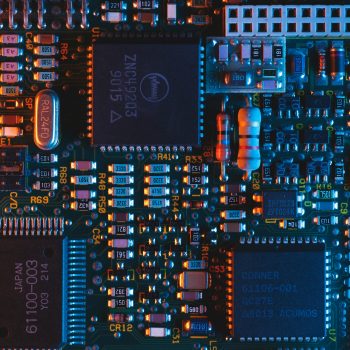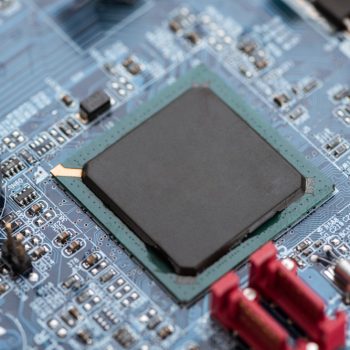Everyone loves a success story, but failures tend to be shoved under the carpet. However, we can learn much more from failure than from success. In this way, failure is a stepping stone to success. In the hardware startup world, there have been many failures, and we can learn from the mistakes these startups have made that ultimately led to their demise.
Here are some of the most common mistakes that hardware startups make and advice on how to avoid them:
- Not building a prototype that works in different conditions
This is the first step in your hardware startup journey and can greatly impact your progress. Let’s say you’ve built a great prototype that works well near sea level. What happens when the same product is taken to a higher altitude?
Questions such as these need to be answered before you start shipping out faulty products to customers. If you’re building a hardware product in an industry such as healthcare, automotive, or aerospace, testing the product for various different scenarios becomes even more critical.
It’s imperative for hardware startups to test their product for different scenarios and environments. This will ensure that you don’t end up shipping defective units to your customers. After all, your credibility and your customer’s trust are at stake.
You may think it’s practically impossible to test a product for multiple different scenarios. If you’re thinking of physical prototypes, yes it is. But there is another way you can test your product in a low-cost, low-risk environment: engineering simulation. Engineering simulation software helps you test your ideas virtually in any number of real-world scenarios. Startups can look at programs such as the ANSYS Startup Program that offer simulation solutions to startups.
- Failing to take manufacturability into account
So, you’ve created a fully functional prototype. Congratulations! But wait, now you now have to face the hurdle that most hardware startups have trouble with once their prototype is ready: manufacturing their product at scale. This is also known as “Design for Manufacturability”.
You could’ve used prototyping boards such as Raspberry Pi or Arduino for building your prototype, but bear in mind that these are not viable options to manufacture your product at scale. Another challenge that hardware startups face is designing their product enclosure.
While enclosures for prototypes can be built using 3D printing, production units use injection molding to build at scale. It’s important to take into consideration all the modifications your enclosure will go through when using this method since it has several design rules that you must follow.
- Skipping market research
Let’s face it: every founder is in love with their idea. But do you know what the success of your hardware product depends on? The answer is how much your target audience loves your idea (and the product you finally build).
Try as you might avoid the marketing side of starting a business, this is where you should begin research for your hardware startup.
Begin by asking yourself ‘who am I building this product for?’ This is your target audience. Next, think of what problem your product is solving for these people. Is this a real problem your audience is facing or something you’ve cooked up to sell a product? If you are creating a simple B2C product, the best way to find out is to speak to your target audience face-to-face or online (community forums, social media). In some cases, if you are creating a groundbreaking technology, you will also have to identify the few experts in your field who might be able to help out with valuable insights.
Another aspect of market research is finding out who your competitors are and how you will differentiate your product from theirs. If your research is solid, you’ll know which core features of your product matter most to customers. If not, you’ll end up with a product that nobody needs, packed with too many features that nobody uses.
- Underestimating development costs
It’s important to take into account how much you’ll be spending on development in order to have a healthy profit margin.
We are not referring to prototyping costs. Thanks to modern software simulation tools, prototyping can be made substantially cheaper in comparison to building a costly physical prototype by trial and error. But the cost of manufacturing your product at scale is what you really need to consider: assembly, warehousing, certifications, packaging, and shipping. And let’s not forget delays and defects that you may have to deal with.
It’s crucial to take these into account while setting your sales price or you’ll end up with no profit margin, as well as delays in product manufacturing.
- Developing “too many” features
This is not necessarily exclusive to hardware startups, but many of them are guilty of committing this mistake.
Developing too many features can be very expensive and time-consuming, and at launch, you may end up with a generic product that nobody really wants. Instead, focus your energy on developing one single feature that your target audience needs and doing it better than anyone else in the market.
Remember that a product that performs one function in a superior way is better than a product that performs 10 functions in an average way. The more features you try to add, the more chances of things going wrong, wasting your time and resources.
Hardware startups should first develop an MVP with one core feature. Take that to potential customers, get their feedback, and then work on developing a better version. Don’t try to develop your final product on the first attempt.
- Choosing the wrong manufacturing partner
Your manufacturer carries the success of your product on his shoulders. Why? Because no matter how good your prototype is, it only matters how well you can develop the product at scale.
It is vital to choose a manufacturing partner that is both competent and can meet deadlines. Before you zero in your manufacturer, be sure to speak to as many candidates as possible, and put proper documentation in place, to avoid delays and roadblocks.
Spend as much time as possible with your manufacturing partner to build a strong relationship. Set expectations in the beginning, from a quality of production to production schedules. It’s also important to choose the optimal factory size. If the factory manufactures millions of parts every month, they may not be willing to give the necessary attention to your order.
- Lack of a differentiating factor
Why do people buy iPhones when other cheaper phones are available on the market? Some of these phones have even managed to copy the features that Apple offers, such as interface and style. Why is iPhone still the leader in the market?
Because consumers know that Apple is an innovator. While every product can be copied, you need to have the ability to innovate and lead the market by being the first to offer unique ways to solve problems that set you aside from the pack. Patents can be an expensive, especially if you don’t have institutional investment.
In order to differentiate your product, you need to build a strong brand, offer great customer support, and build a community around your company.
- Keeping insufficient profit margins
Your profit margin depends on two things: the cost of manufacturing your product and the sale price of your product. If you underestimate your cost of production or overestimate the price people are willing to pay for your product, you’ll end up with a low-profit-margin.
In the beginning, it’s common to see a low-profit-margin, as you don’t have the benefit of economies of scale. Once you start manufacturing large batches, you need to find a way to lower your cost of production so your profit margin can go higher.
Profit margins are essential to keeping your company afloat. Lower profit margins will also mean fewer resources to invest back into your business.
At launch, a low-profit-margin may be acceptable. But you have to eventually make a profit to be able to sustain your company, yourself, and your family. Even in the beginning, having low-profit margins will make growing your startup much more challenging because you won’t have any significant profit to invest back into your company.
- Not working out cash flow needs
Many startups struggle with this, and it happens to be the second most important glitch after manufacturing.
First of all, there is the cost of developing a prototype. Depending on the complexity of your product, this can be an expensive affair. Luckily, hardware startups have the option of developing multiple virtual prototypes to see if their idea is feasible in the real-world through engineering simulation. Programs such as the ANSYS Startup Program offer multiple simulation options to startups.
After prototyping, startups need steady cash flow for manufacturing. Manufacturers generally require 50% upfront payment for production.
On the other hand, when you sell your inventory, it is likely that your clients will pay you after 30 to 90 days. So, you’re looking at financing a good part of the inventory yourself, until you get paid.
In the early days, it is often essential to have an initial investment, ensuring your cash flow needs are met on time.
- Failing to invest in marketing
Hardware startup founders are often solely focused on building the product, and ignoring marketing altogether. “Build it and they will come” is surely a recipe for failure.
If marketing is not your strong suit, then it helps to have a co-founder with valuable marketing experience. You can also hire an independent sales representative so they can set up distribution channels and start acquiring customers. Most of the time, sales representatives get paid on a commission basis, so you only pay once the sale has been made.
It’s important to figure out a sales strategy early on. Don’t just focus on hiring engineering talent. Also, look at adding valuable marketing and sales hires to your team, and identifying who can focus on customer acquisition.
- Focusing on ‘beauty’ over ‘value’
While there’s nothing wrong with beautiful products, they should also work properly.
While the design is one of the plus points of the iPhone, let’s not forget that the product is superior too. Many startups try to simply design a beautiful product and don’t invest too much in core functionality. The thing is customers don’t care as much about how your product looks, as much as they care about how well it works. So it doesn’t make sense spending precious dollars on an aesthetic designer.
In the beginning, it’s okay to ship not-so-good-looking products to early adopters, so you can get feedback from them. The design is something you can always work on later.
- Choosing the wrong cofounder
This is where a lot of startups falter in general, not just hardware startups. A co-founder should ideally bring complementary skill sets to the table, and essentially complete you.
This means if you’re a technical founder, you need someone with business acumen and marketing know-how. On the other hand, if you’re a salesperson, and have zero knowledge about building hardware, you obviously need someone to bring your ideas to life. Avoid choosing someone with the exact same skill set.
Another important factor among co-founders is the presence of trust and mutual understanding. If you don’t believe in each other’s vision and skills, you’re probably not a good fit for each other.
- Mismanagement of inventory
It’s important to have a handle on inventory if you don’t want things to spin out of control. If you manufacture too many units, you will have to wait until all of them are sold. On the other hand, if there’s a lot of demand and no product, you’ll lose customers.
Also, keep in mind that it costs money to store and ensure inventory. To avoid losses and lost opportunities, have a dedicated inventory management system in place for your startup.
- Going to investors too soon, or too late
As a B2B hardware startup, you’re likely to need a good amount of initial investment to start manufacturing your product. If you need money from investors, by all means, go to them. Do not wait until your idea can no longer be salvaged, or has already been copied.
On the other hand, if you think you can sustain your company without outside investment, hold off on seeking investors. Spend some time doing research on which investors would be interested in your product, and have experience in your industry. Once you’ve done some research, approach them cautiously.
Conclusion
We hope you can learn a thing or two from the most common mistakes that hardware startups make. Are you guilty of making any of these mistakes? How did you rectify them and save your startup? Share your story in the comments below!


